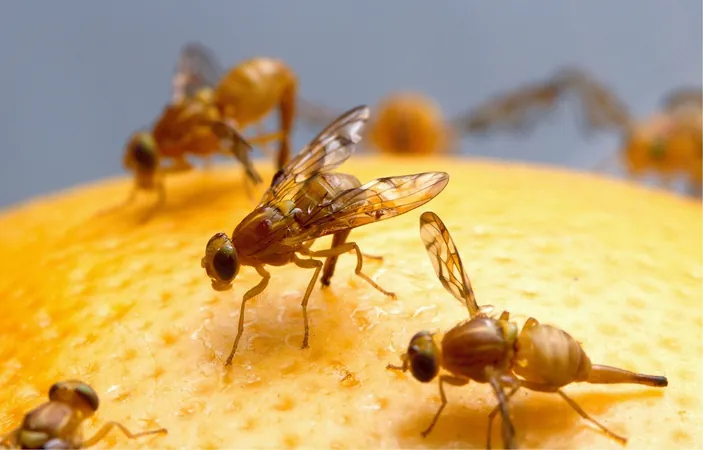
Groundbreaking Fruit Fly Brain Mapping Paves the Way for Understanding Human Cognition
2024-10-06
Author: Arjun
Introduction
A revolutionary study led by scientists, including Davi Bock, Ph.D., Associate Professor at the University of Vermont’s Robert Larner, M.D. College of Medicine, has successfully mapped the entire brain of the fruit fly, Drosophila melanogaster. Backed by the National Institutes of Health (NIH) through The BRAIN Initiative, this research has significant implications for neurobiological studies and provides insights into neural circuits that govern behavior.
Key Findings
Published in the prestigious journal Nature, the study introduces a "consensus cell type atlas," a comprehensive catalog that details the variety of cells present in the fruit fly's brain, which houses approximately 130,000 neurons. For context, a human brain contains around 86 billion neurons, while a mouse has about 100 million. Nevertheless, the relative simplicity and accessibility of the fruit fly's neural architecture present a unique opportunity for researchers to explore fundamental brain processes.
Methodology
Utilizing advanced electron microscopy techniques, the scientists created a detailed map of every neuron and synaptic connection within the fly's brain. This expansive database, known as FAFB (Full Adult Fly Brain), enables researchers to discern how various neural circuits interact to manage behaviors such as motor control, decision-making, learning, and memory.
Researcher Insights
Gregory Jefferis, Ph.D., a co-lead on the study, expressed the importance of this mapping effort: "Understanding how the brain works requires knowledge of how all the neurons interact and enable thought processes.” With this complete wiring diagram for the fruit fly, researchers gain a crucial tool to begin simulating the brain's responses to external stimuli.
Implications
Though similar studies have been conducted on simpler organisms, the mapping of the adult fruit fly marks a pivotal moment due to the complexities of its behaviors. Insights gleaned from this study can potentially illuminate how neural circuits across various species process information, fostering a deeper understanding of cognitive functions in larger brains, including those of mammals.
Future Directions
While fully translating this mapping onto the human brain remains a challenge, Bock notes that this work significantly advances the field of connectomics, which focuses on mapping the brain’s wiring. The ability to visualize the shapes and synaptic connections of every single neuron in a genetically important organism like the fruit fly is a remarkable feat, surpassing traditional methods of microscopy.
Database and Resources
The research utilized resources developed by the FlyWire Consortium, enabling scientists to create an interactively browsable database containing approximately 50 million chemical synapses among the fruit fly's 139,255 neurons. By making the complete dataset publicly accessible, researchers hope to stimulate further exploration into how both healthy brains function and what goes awry in conditions like mental health disorders.
Significance of the Study
John Ngai, Ph.D., director of NIH's BRAIN Initiative, acknowledged the significance of this work: "The fruit fly is a surprisingly sophisticated model for behavior studies. This milestone not only equips researchers with innovative tools but also acts as a stepping stone toward mapping the neurological connections in larger brains, including those of mammals and humans.”
Conclusion
As researchers continue to trace the pathways from sensory cells to motor neurons in fruit flies, the implications of their findings could reshape our understanding of human cognition and behavior, making this study an exciting frontier in neuroscience.



 Brasil (PT)
Brasil (PT)
 Canada (EN)
Canada (EN)
 Chile (ES)
Chile (ES)
 España (ES)
España (ES)
 France (FR)
France (FR)
 Hong Kong (EN)
Hong Kong (EN)
 Italia (IT)
Italia (IT)
 日本 (JA)
日本 (JA)
 Magyarország (HU)
Magyarország (HU)
 Norge (NO)
Norge (NO)
 Polska (PL)
Polska (PL)
 Schweiz (DE)
Schweiz (DE)
 Singapore (EN)
Singapore (EN)
 Sverige (SV)
Sverige (SV)
 Suomi (FI)
Suomi (FI)
 Türkiye (TR)
Türkiye (TR)